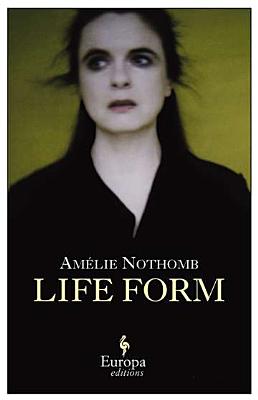
Life Form
by Amélie Nothomb; translated by Alison Anderson
Europa Editions; 125 p.
Amélie Nothomb’s novel Life Form isn’t a particularly long work, but to go too far into its plot runs the risk of upsetting the balance that she’s created here — one that at first seems to be examining the effects of war on those participating in it, but ultimately becomes more about the act of observation, of being a voyeur of both combat and of damaged bodies in general. Nothomb’s novel has as its narrator a novelist named Amélie Nothomb, but — like Nick Tosches’s recent Me and the Devil — it moves its authorial surrogate to some decidedly unlikely places along the way. I’ve tried to be as vague as I can about certain elements of the plot, as Nothomb’s narrative makes use of certain ambiguities — an approach that largely pays off as the book reaches its conclusion.
The novel opens in late 2008 as Nothomb, a Belgian novelist residing in Paris, receives a letter from an American man named Melvin Mapple. He’s a fan of her work, he tells her — and from the outset, we’re made aware of Nothomb’s own preconceptions of Mapple. She at first believes him to be from the Midwest (perhaps a satirical nod to the a specific strain of intellectuals’ perceptions?), and is then surprised to learn that he hails from Baltimore. Even as she has reservations about their correspondence, she asks Mapple for more and more details of his life.
What he tells her is a progressively more surreal and grotesque account: after years of drifting aimlessly through life, he enlisted in the Army and is now stationed in Iraq. Haunted by his actions, he begins eating far beyond excess, adding hundreds of pounds to his frame. Nothomb is alternately fascinated and horrified by this, and her letters to Melvin are both supportive and queasily encouraging. There’s a way to act when someone tells you the name they’ve given their excess weight, and it’s not to discuss a performance artist turning anorexia into a sort of installation work.
Though the relationship between Nothomb and Mapple becomes progressively more unsettling as the novel progresses, the theme of creating onself through narrative remains constant. The epistolary form on display throughout — Mapple’s letters to Nothomb, and their reverse — are echoed in the structure of the novel itself. One assumes that there’s at least some distance between Nothomb the novelist and Nothomb the character; add to that the gulf between characters’ true selves and the selves they manifest through their letters, and you have a surprisingly complex narrative.
This isn’t to say that Life Form‘s elements are entirely in balance. Even considered as a satirical look at intellectual European attitudes towards certain parts of American society, certain plot elements might be cleared up by a quick bit of research. At one point, Mapple writes that “[h]uman fat will be for George W. Bush what napalm was for Johnson.” And while it’s intended to be an over-the-top statement, it’s also so melodramatic that, even in the context in which it’s presented, it’s difficult to take at face value. Nothomb’s narrative does make some of the more unexpected parts of the Nothomb/Mapple correspondence pay off. It’s an odd and fragmented story, one of narratives that enliven and narratives that unravel — for writer and reader alike.
Follow Vol. 1 Brooklyn on Twitter, Facebook, Google + our Tumblr, and sign up for our mailing list.
